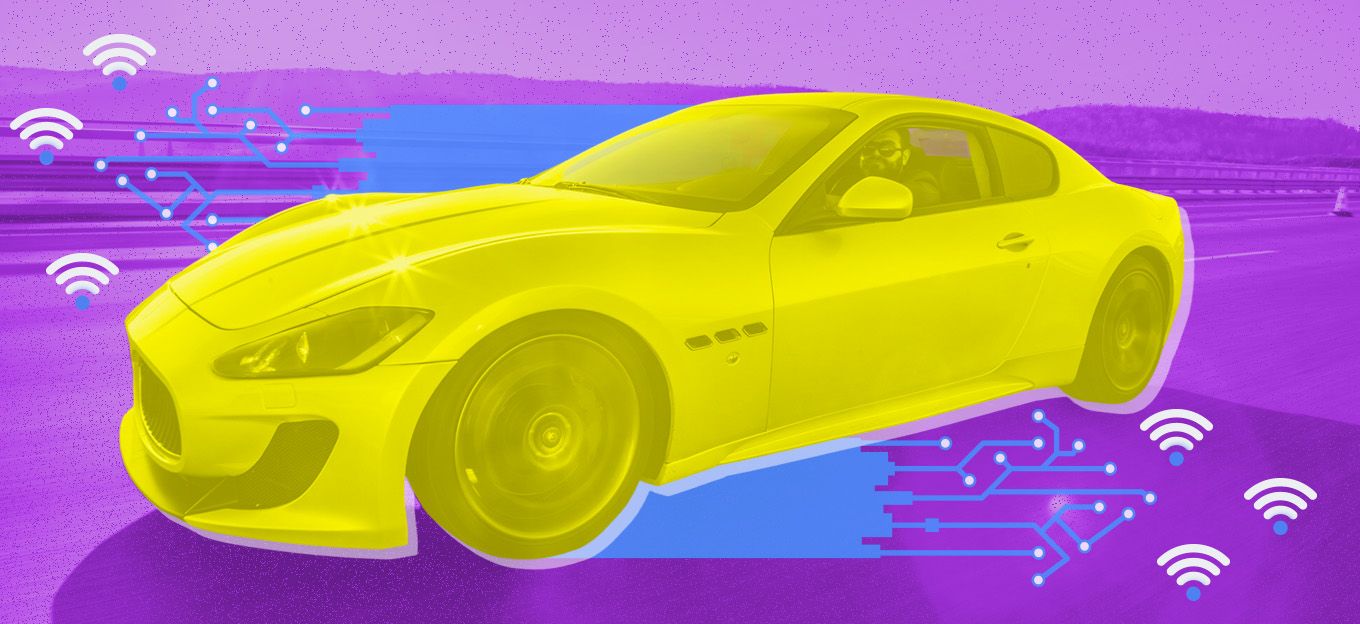What Are the Benefits of Driving a Connected Car?
What Are the Benefits of Driving a Connected Car?
- Last Updated: December 2, 2024
Guest Writer
- Last Updated: December 2, 2024



A connected car is a vehicle with internet access, which allows the devices, both inside and outside the car, to interact with each other. Inside the car, we can find such devices as sensors and on-board computers. The devices outside the car can be part of other cars, houses, and infrastructure.
The first connected cars appeared back in 1996, when General Motors cooperated with Motorola Automotive, which resulted in the introduction of the telematics system OnStar. The system could make voice calls to emergency call centers in case of accidents.
IoT continues to march into our roads and cities, and the change is gaining momentum as the number of cars connected to the internet increases. Thankfully, there are numerous befits to driving a connected car.
The infrastructure of connected vehicles developed to the point that by 2015, OnStar telematics system had processed 1 billion customer requests.
In 2003, the list of capabilities was expanded with vehicle health reports and turn-by-turn navigation. 2007 was the year when Continental—the German automotive manufacturing company—introduced data-only telematics.
The connected car platform was further enhanced in 2014, with Audi A3 offering 4G LTE Wi-Fi Hotspots access.
Benefits of a Connected Car Solution
The automotive industry allowed humanity to build highly effective infrastructure covering the transportation of people and goods with ease.
Still, there are some drawbacks to regular vehicles, such as the following:
- Maintenance is expensive
- Cars depend on fuel that isn't renewable
- They are dangerous not only for drivers and passengers, but for pedestrians as well
Connected car solutions are set to resolve some of those problems. Let’s review the benefits they bring to the table.
- Safety. IoT in the automotive industry provides a ton of hardware and software solutions so the vehicles can be more aware of the surroundings and become more autonomous. For instance, if the vehicle is able to communicate with the Smart City infrastructure, it can get real-time info about road conditions, accidents, traffic, and current weather. The data helps the driver to change his route, avoiding traffic jams and possible accidents. With that, the vehicle can gather the info about the objects on the road around it, including curbs, speed bumps, and other vehicles, making controlling the car and parking it much easier.
- Efficiency. Connected car software can make use of the gathered data to your benefit. For your personal car, the software is able to generate the most effective routes to wherever you want to go, avoiding traffic jams, accidents, busy streets, or roads that are under construction, saving you tons of travel time. For fleets of vehicles, connected car software solutions help manage all the units at the same time. For example, the manager can track the location of the vehicles using GPS and analyze their condition and schedule maintenance, increasing the cars' efficiency.
- Cost-effectiveness. The implementation of IoT infrastructure on the roads is not cheap, and neither are the connected vehicles themselves. Nevertheless, we can still see the benefit from the amount of time and fuel saved from minimized traffic jams. Moreover, a profound infrastructure makes it easier for people to carpool.
- Environment. With more people carpooling, there will be fewer cars on the roads, which means less air pollution due to fuel emission. Also, most modern connected cars run on electricity, and the trend is expanding.
- Accessibility. Smarter cars provide ways for disabled people to use more transportation options. Before they could only rely on public transportation, and even then, they needed additional help. With connected self-driving cars, those who are disabled will be able to easily drive on their own, with advanced technology helping them.
- Data. Sensors on connected cars gather a lot of data, which is presented to the driver or used by the vehicle to generate an autonomous response to the situation. But the data can also be analyzed by the manufacturers and companies providing smart car development services, in order to further enhance the user experience.
As we can see, connected car solutions improve transportation in various ways, helping to solve problems we've been struggling with for many years.
Conclusion
Having appeared at the end of the previous century, connected-car development skyrocketed with the introduction of IoT technologies. Smart vehicles are meant to change the transportation infrastructure for the better, with enhanced safety, optimizing routing, cutting down pollution, and improving accessibility.
From this point forward, the progress of connected-car development will only escalate, powered by the enormous amount of data generated by the vehicles.
Written by Olga Moskalenko
The Most Comprehensive IoT Newsletter for Enterprises
Showcasing the highest-quality content, resources, news, and insights from the world of the Internet of Things. Subscribe to remain informed and up-to-date.
New Podcast Episode

How Drones and Telecom Enable Aerial IoT
Related Articles





